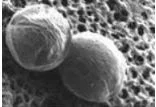Cryptosporidiosis is a severe diarrheal disease caused by Cryptosporidium parvum. C. parvum is a single-cell animal called a protozoan.
Detailed Escherichia Coli
Escherichia coli, also referred to as E. coli, is a type of fecal coliform bacteria that is found in the intestines of healthy warm-blooded animals and humans. Most E. coli strains are harmless and serve a useful function in the body by stopping the growth of harmful bacteria species and by making necessary vitamins. However, some strains can be opportunistic pathogens, while others can cause gastrointestinal illness in healthy humans when ingested.







